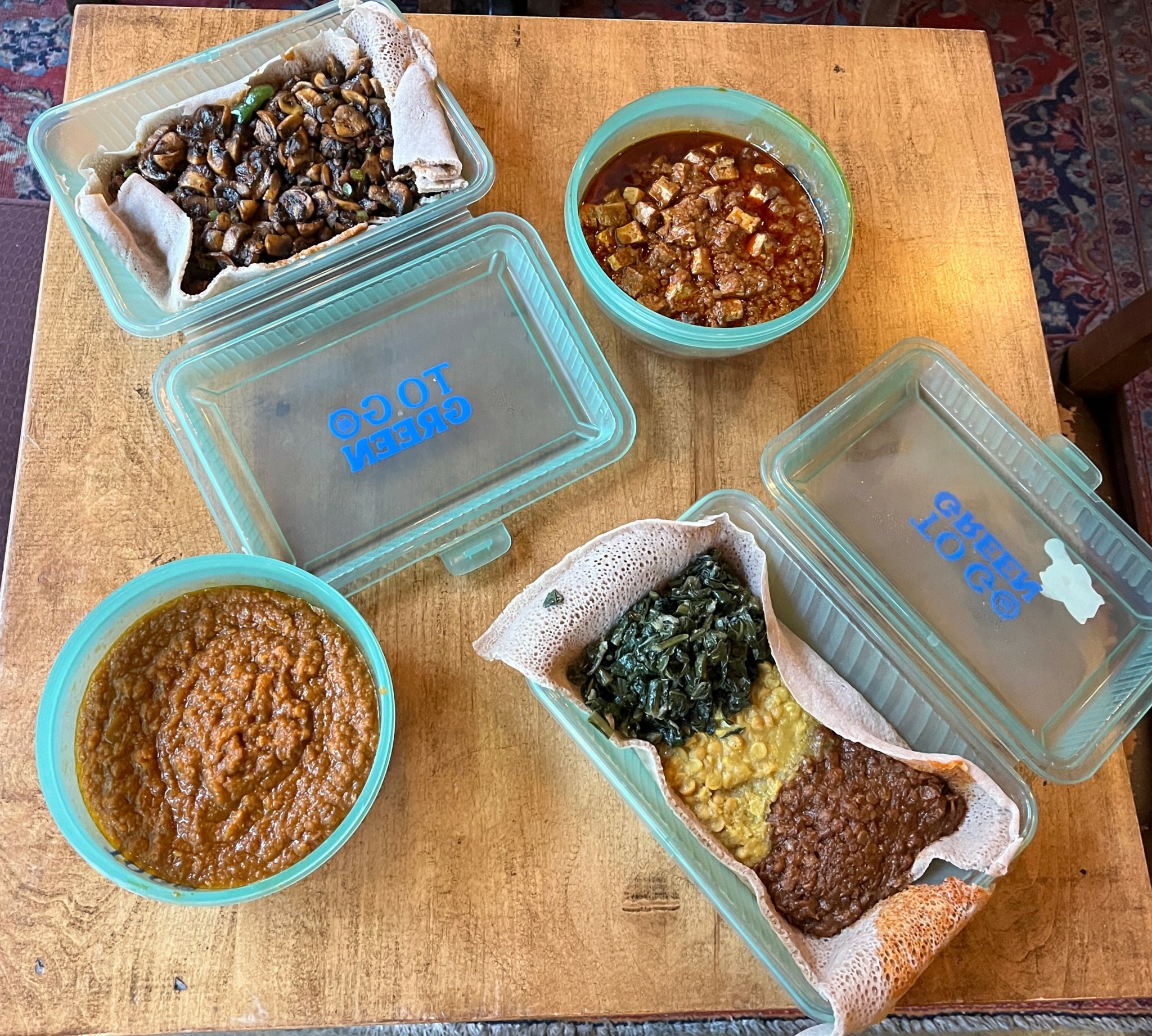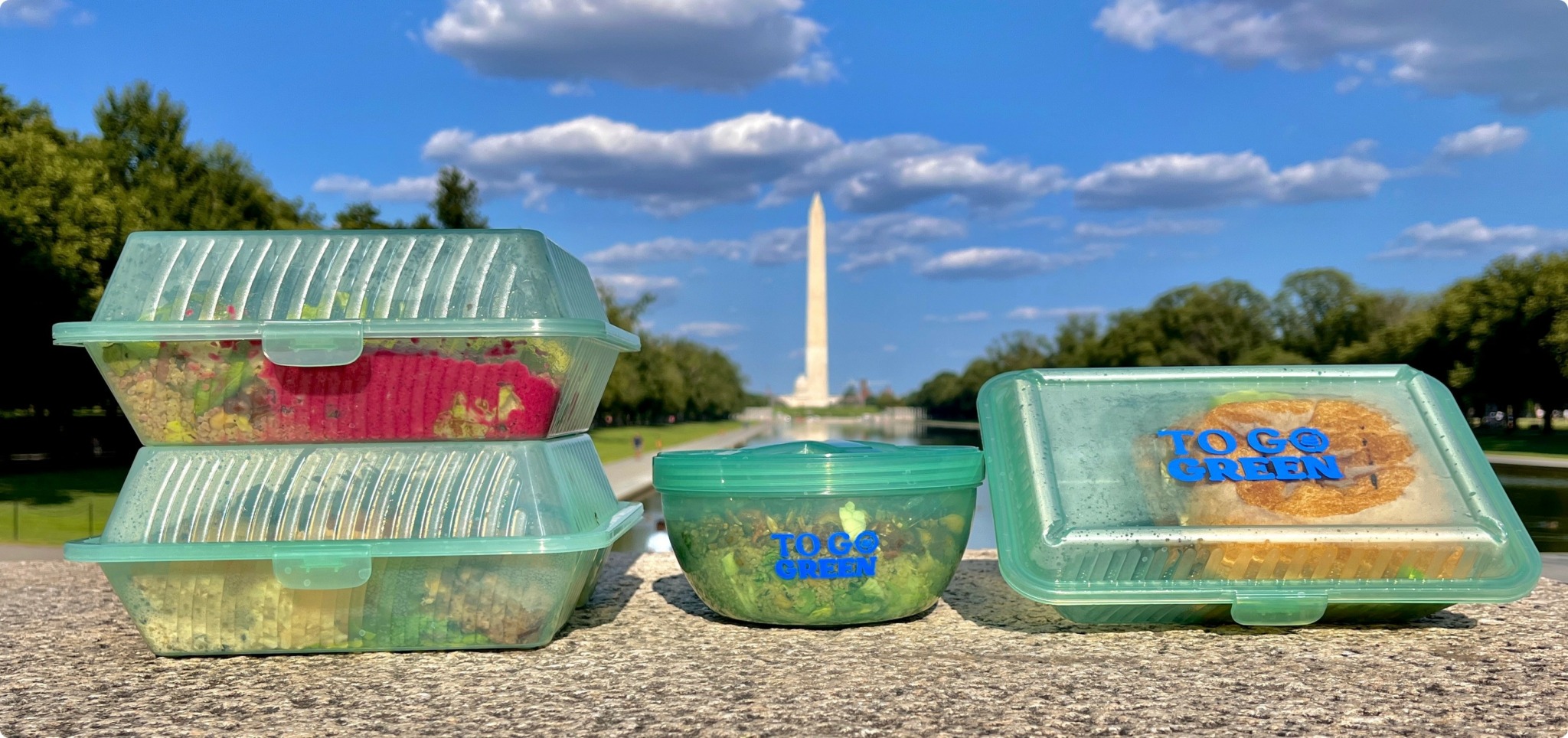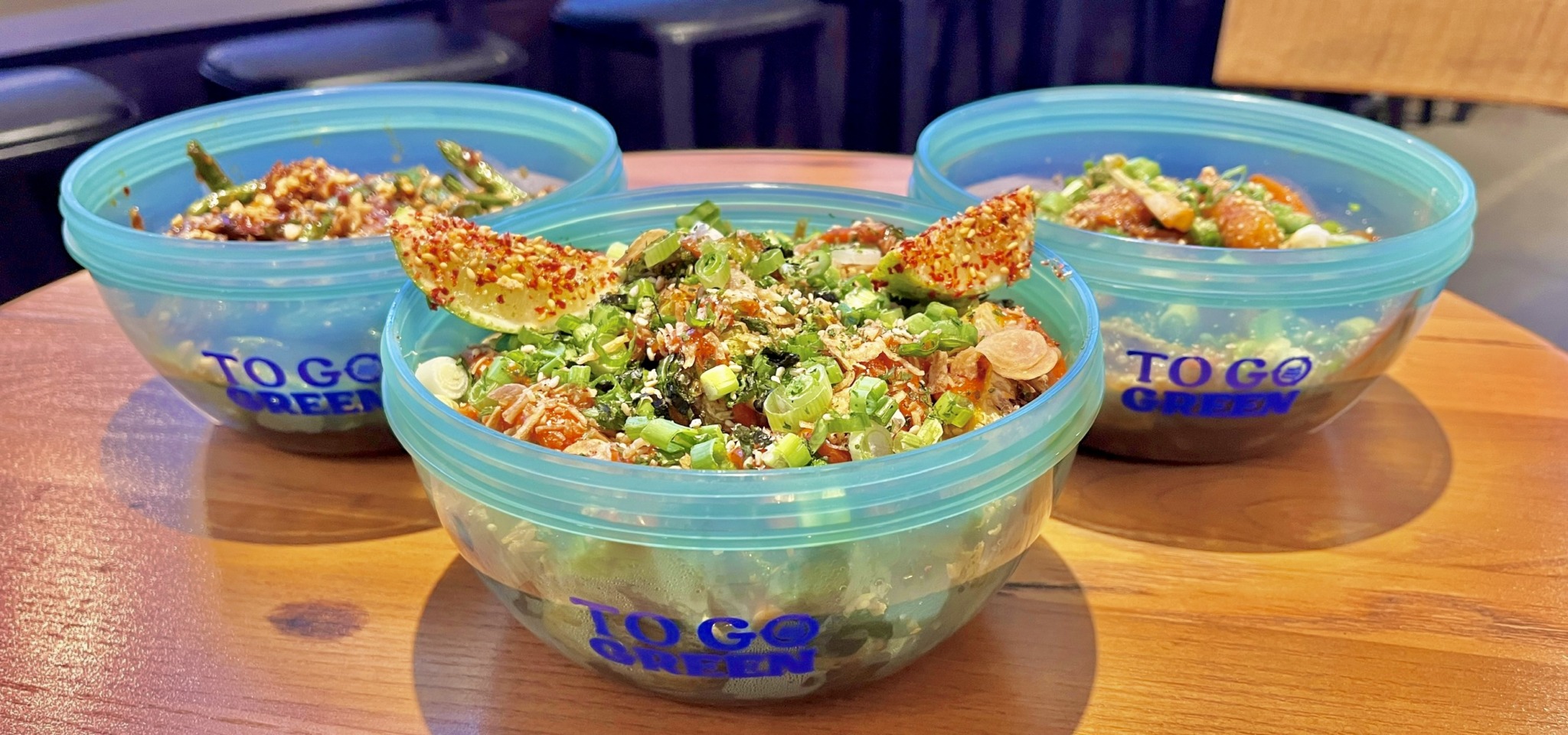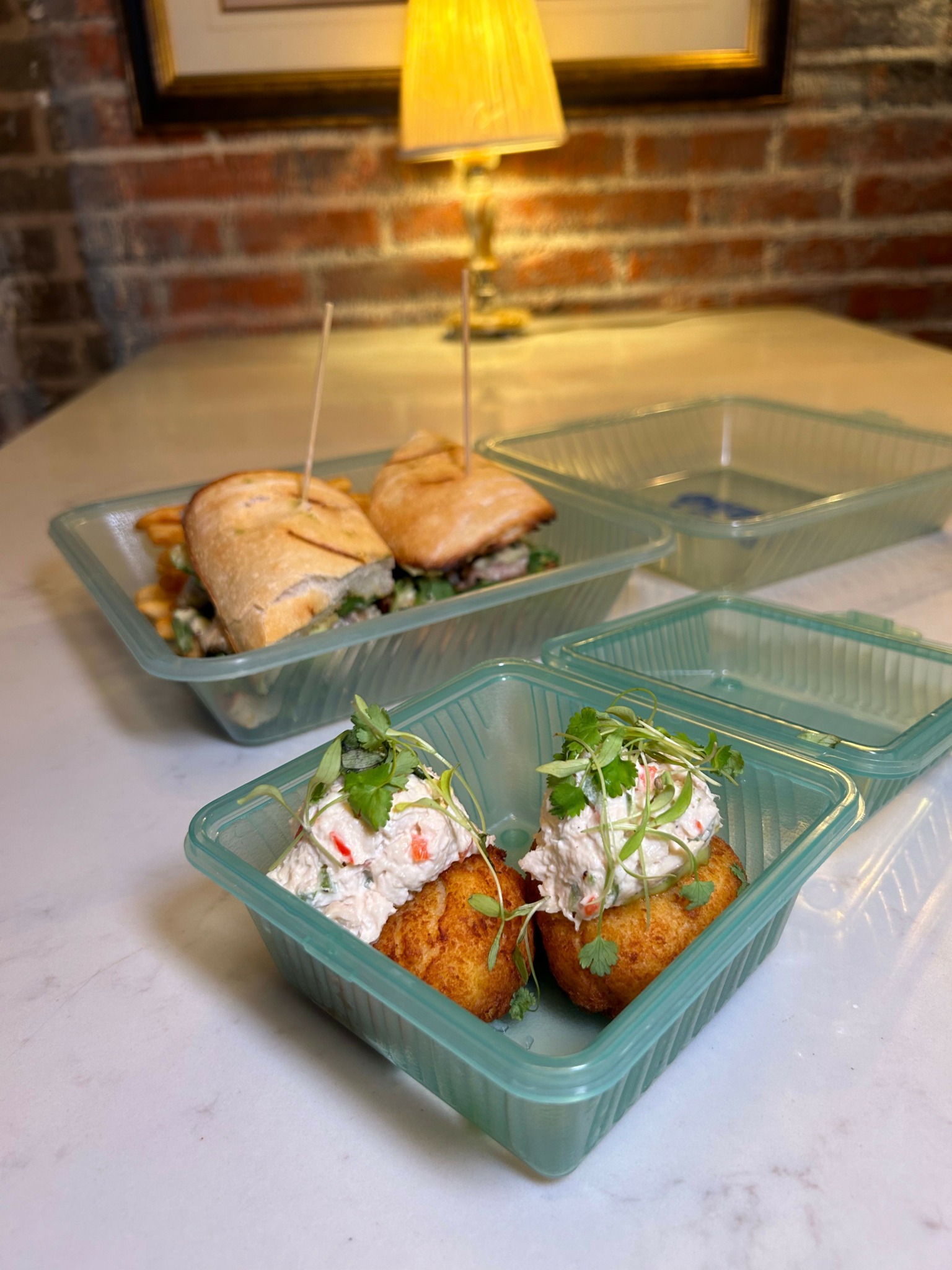We caught up with the brilliant and insightful Harrison Kay a few weeks ago and have shared our conversation below.
Harrison, thanks for joining us, excited to have you contributing your stories and insights. Alright, so you had your idea and then what happened? Can you walk us through the story of how you went from just an idea to executing on the idea
The idea for To Go Green was simple: a shared network of reusable, returnable containers for takeout and delivery. The intricacies, however, were more complex. How would we track the containers? Would we charge restaurants, customers, or both? How could we make container returns as convenient as possible? All of these business model challenges were important. Nonetheless, they all took a backseat to our primary launch obstacle: startup capital.
In the search for funding, my brother and co-founder, Kevin, and I discovered that the DC Department of Energy and Environment recently launched a Ditch the Disposables grant program to reduce single-use foodware from takeout and delivery. One of the projects eligible for funding was establishing a third-party reusable foodware service–our goal exactly. After six grueling months of meeting our project deliverables, including finalizing our business model and acquiring restaurant partnership commitments, we were awarded the maximum grant amount. From there, we began building the business.
To Go Green is a complex business model: it requires hardware, the reusable packaging, and software, namely the technology needed to track the packaging and charge vendors who use it. On the hardware side, we engaged a trusted manufacturer to procure a line of reusable containers that could meet the needs of a wide variety of restaurants. On the software side, we contracted a team of developers to build our system, which operates much like the typical food ordering platforms.
To use our service, customers simply place a pickup or delivery order from one of our restaurant partners on our website, and the restaurant will receive that order through an app and tablet we provide. The restaurant then packages the order in our reusable containers without any extra steps. Once the customer receives their order, they have three weeks to return the containers, either by dropping them off at any participating restaurant or by requesting an at-home pickup. Throughout this entire process, our technology tracks the packaging in the background, ensuring customers return their containers and restaurants are adequately stocked with inventory.
With our packaging and technology in place, we’ve continued scaling our marketplace by acquiring more restaurants and customers. We’re excited for some big upcoming campaigns and look forward to offering our containers through other points of sale to make our service more accessible to the masses.

Harrison, love having you share your insights with us. Before we ask you more questions, maybe you can take a moment to introduce yourself to our readers who might have missed our earlier conversations?
During the pandemic, Kevin and I lived together in downtown DC and would regularly order takeout and delivery. At the time, Kevin was a DC Superior Court law clerk and I was in high school, so we relied on the convenience of takeout and delivery to support our busy schedules. Over time, however, we grew frustrated by the amount of waste we generated with each meal and thought it was silly to use packaging for mere minutes before throwing it away. We knew there had to be a better way–a scalable solution that was more convenient than bringing our own containers.
After researching solutions to packaging waste, such as the milkman model, we built the framework for To Go Green, DC’s first reusable takeout container service. To Go Green allows customers to order takeout and delivery directly through our online platform in reusable containers they can return in person to any restaurant partner or right from home.
Often, living sustainably is cost-prohibitive or comes at the expense of convenience. We’re proud to offer customers our containers at no extra charge and the option to return them without ever leaving the front door–that’s even easier than taking out the trash.

Let’s talk about resilience next – do you have a story you can share with us?
The greatest challenge in launching our service was acquiring our initial cohort of restaurant partners. When Kevin and I began pitching restaurants, we had already moved out of DC and back to our hometown in the suburbs of Maryland, a lengthy Metro ride away. Given the burdensome commute, we tried pitching restaurants via emails and phone calls, but those efforts were futile. I eventually realized that we had to pitch in person to have any hope of acquiring partners.
For many months, I would Metro from Maryland to DC almost daily. Once downtown, I would hop from restaurant to restaurant for hours on end trying to make my pitch, but I rarely succeeded. The decision maker wasn’t there, the restaurant was too busy, or the team simply wasn’t interested or even willing to give me the time of day. It was disheartening, especially in 20-degree weather on a Friday night. Nonetheless, I kept pushing and learned to work smarter rather than harder. Instead of pitching as many restaurants as possible on a given day, I would target specific restaurants more likely to be receptive to our service–those with plant-based offerings, reusable dining ware, and sustainable values, just to name a few criteria. Eventually, 6 pm Friday pitches became a relic of the past; 2 pm Monday sales were my new go-to.
With Kevin’s help, my gritty determination and strategic planning paid off in the form of To Go Green’s first dozen restaurant partners. I look forward to onboarding many more.

What do you think helped you build your reputation within your market?
Sustainability is on the rise. Customers are demanding more sustainable options from businesses as the effects of climate change and waste become increasingly apparent. And it’s not just the diehard environmentalists who want more sustainable options; who likes the mountain of cardboard boxes delivered with their Amazon order?
While restaurants recognize this increasing demand, providing sustainable packaging is difficult for them because they operate on razor-thin margins. So-called ‘compostable’ packaging, which is mainly greenwashing, can cost as much as 75 cents per container–that adds up fast. So, when restaurants heard that we only charge a few cents per reusable container and track their packaging to ensure it’s returned, they recognized that our service was a convenient and cost-effective method to attract customers. Once bought in, restaurants were eager to release campaigns to showcase our containers in action, which helped us reach a new audience and build our brand.
Our growing reputation has undoubtedly been strengthened by our fantastic community. Early on, we benefitted from press coverage that had a ripple effect of word-of-mouth marketing. Local zero-waste activists and social media influencers have also promoted us, which has been invaluable to our credibility as an early-stage startup. While To Go Green is only currently active within the DC restaurant space, we’ve received partnership inquiries from caterers, hotels, and restaurants from Virginia to New Mexico.
Still at the beginning of this venture, we’re excited for the future of To Go Green and all the opportunities that lie ahead.
Contact Info:
- Website: https://togogreen.eco/
- Instagram: Business: https://www.instagram.com/togogreen.eco, Personal: https://www.instagram.com/harrisonkay__
- Linkedin: Business: https://www.linkedin.com/company/to-go-green/, Personal: https://www.linkedin.com/in/harrison-kay-940173298



